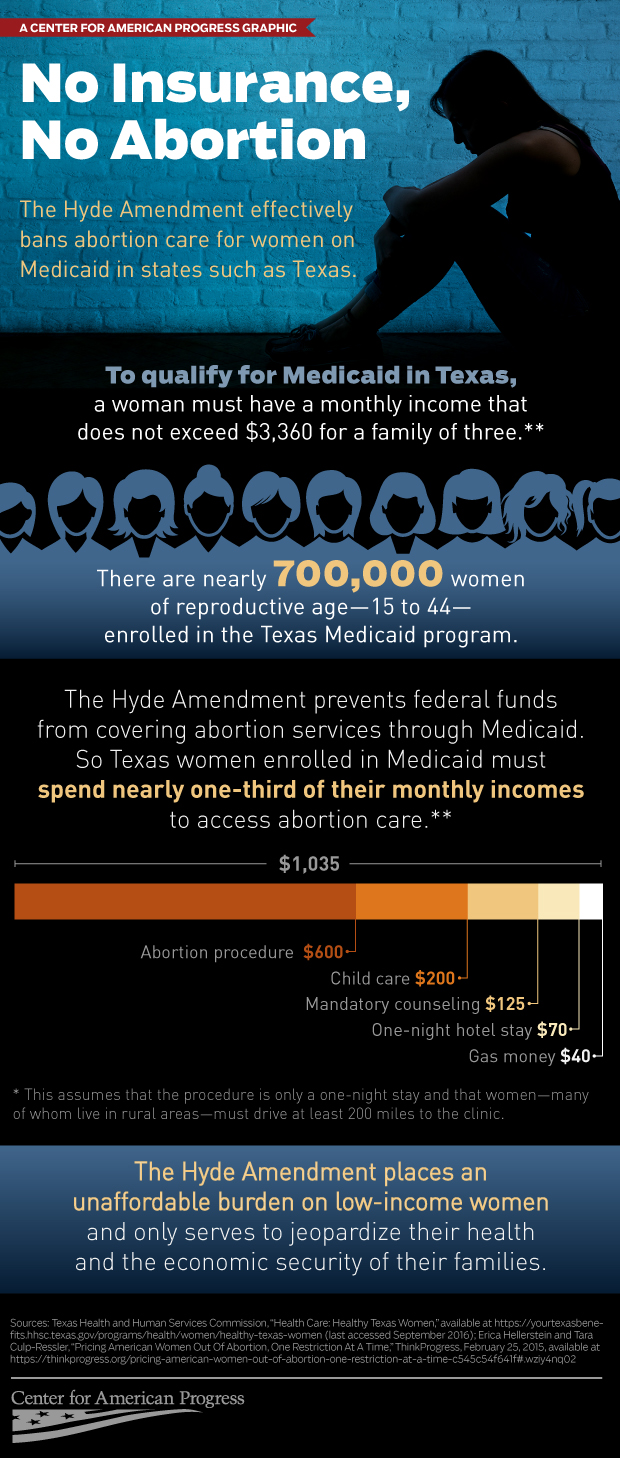This article contains a correction.
See also:
This week marks the 40th anniversary of the Hyde Amendment, an annually approved appropriations rider that prevents federal funds from covering abortion services through the Medicaid program. This funding restriction, coupled with other state restrictions, effectively bans abortion care for many low-income women. Since the out-of-pocket expenses for abortion services are often cost prohibitive, Hyde and similar restrictions place a financial burden on women and further jeopardize both their health and the economic security of their families. This is particularly true for women who live in states such as Texas.
Earlier this year, the U.S. Supreme Court ruled in Whole Women v. Hellerstedt that two provisions of Texas’ targeted regulation of abortion providers, or TRAP, law presented an “undue burden” for women seeking abortions in the state of Texas. This law resulted in the closure of more than 20 clinics across the state. While the Supreme Court ruling would allow these clinics to reopen, they remain closed due to the time it takes to rehire staff and secure new leases for office space. Also, because of state budget cuts to family planning programs, many Texas women have limited access to contraception. As a result, Medicaid enrollees, particularly those living in rural areas, have limited access to contraception to prevent unintended pregnancies and are burdened with the high cost of abortion services because their health plans do not cover it.
Worse, in order to qualify for Medicaid in Texas, a woman must have a monthly income that does not exceed $3,360 for a family of three.** So with little to no resources, if a rural woman in Texas faces an unintended pregnancy and needs an abortion, she must pay out of pocket for the service, which can total more than $1,000 depending on where she lives in the state.

Heidi Williamson is the Senior Policy Analyst for the Women’s Health and Rights Program at the Center for American Progress.
** Correction, September 30, 2016: This piece has been updated to reflect that a woman must have a monthly income that does not exceed $3,360 for a family of three to qualify for Medicaid in Texas.